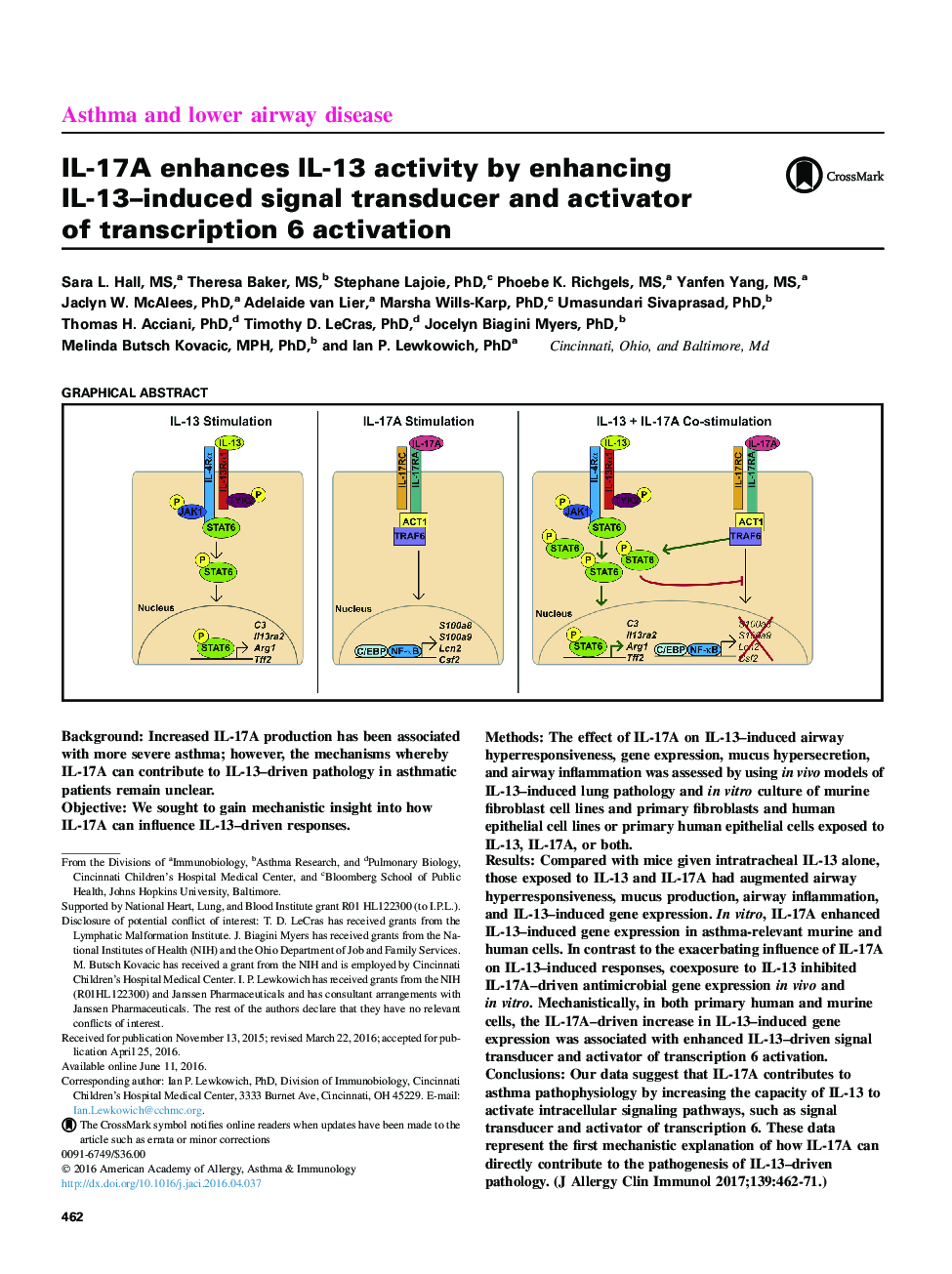| کد مقاله | کد نشریه | سال انتشار | مقاله انگلیسی | نسخه تمام متن |
|---|---|---|---|---|
| 5646719 | 1407070 | 2017 | 24 صفحه PDF | دانلود رایگان |

BackgroundIncreased IL-17A production has been associated with more severe asthma; however, the mechanisms whereby IL-17A can contribute to IL-13-driven pathology in asthmatic patients remain unclear.ObjectiveWe sought to gain mechanistic insight into how IL-17A can influence IL-13-driven responses.MethodsThe effect of IL-17A on IL-13-induced airway hyperresponsiveness, gene expression, mucus hypersecretion, and airway inflammation was assessed by using in vivo models of IL-13-induced lung pathology and in vitro culture of murine fibroblast cell lines and primary fibroblasts and human epithelial cell lines or primary human epithelial cells exposed to IL-13, IL-17A, or both.ResultsCompared with mice given intratracheal IL-13 alone, those exposed to IL-13 and IL-17A had augmented airway hyperresponsiveness, mucus production, airway inflammation, and IL-13-induced gene expression. In vitro, IL-17A enhanced IL-13-induced gene expression in asthma-relevant murine and human cells. In contrast to the exacerbating influence of IL-17A on IL-13-induced responses, coexposure to IL-13 inhibited IL-17A-driven antimicrobial gene expression in vivo and in vitro. Mechanistically, in both primary human and murine cells, the IL-17A-driven increase in IL-13-induced gene expression was associated with enhanced IL-13-driven signal transducer and activator of transcription 6 activation.ConclusionsOur data suggest that IL-17A contributes to asthma pathophysiology by increasing the capacity of IL-13 to activate intracellular signaling pathways, such as signal transducer and activator of transcription 6. These data represent the first mechanistic explanation of how IL-17A can directly contribute to the pathogenesis of IL-13-driven pathology.
316
Journal: Journal of Allergy and Clinical Immunology - Volume 139, Issue 2, February 2017, Pages 462-471.e14